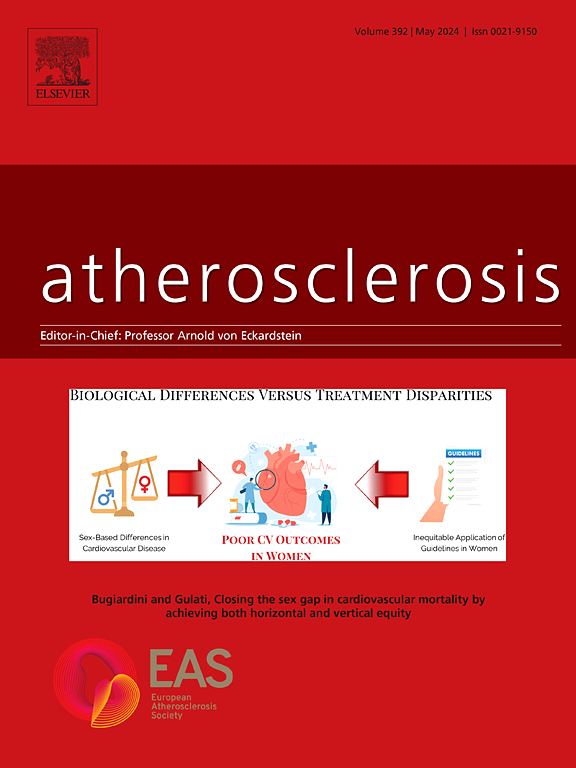Integrative analysis of single-cell transcriptomics and genetic associations identify cell states associated with vascular disease
IF 4.9
2区 医学
Q1 CARDIAC & CARDIOVASCULAR SYSTEMS
引用次数: 0
Abstract
Background
Vascular diseases are accompanied by alterations in cellular phenotypes which underlie disease pathogenesis, with single-cell technologies aiding in the discovery of cellular heterogeneity among endothelial cell (EC) and vascular smooth muscle cell (VSMC) populations. In atherosclerotic disease, VSMCs are hypothesized to transition between contractile and synthetic states; however, the specific vascular subpopulations and intermediate cell states responsible for early vascular dysfunction remain unclear.
Methods
We integrated newly generated and published single-nuclear RNA-sequencing (snRNA-seq) datasets to analyze normal (n = 7), aneurysmal (n = 9), and atherosclerotic (n = 2) flash-frozen human ascending thoracic aortas. Cell types and subtypes were defined using both top marker genes and canonical gene markers. Disease enrichment and relevant cell types were identified using newly developed computational tools to integrate GWAS data from multiple vascular disease-relevant studies with the single nuclei aortic expression profiles.
Results
Nuclear dissociation and snRNA-seq identified ten distinct transcriptomic clusters from the integrated analysis representing all major vascular cell populations. Three distinct VSMC populations emerged that exhibited differential expression of extracellular matrix, contractile and pro-proliferative genes. Aneurysmal specimens were enriched for one fibroblast and one VSMC subpopulation compared to healthy tissue. RNA-trajectory analysis inferred a phenotypic continuum of gene expression between VSMC A and VSMC B or C and between two of the identified fibroblast types. VSMCs and Fibroblast C exhibited the greatest cell type-specific enrichment of genes mapped to GWAS loci for coronary artery disease (CAD), blood pressure, and migraine. Cell type-specific enrichment scores were more robust among the transcriptional profiles from non-diseased vascular tissue.
Conclusions
Our use of single-cell isolation and new computational methods prioritizes the cell types that most contribute to vascular disease pathogenesis. Specifically, tissue dissociation and single-nuclear transcriptomics better represent all vascular cell types, from which we demonstrate enrichment of pro-proliferative VSMCs in TAA and further implicate phenotypic switching as a likely pathologic mechanism. Integrated analysis of cell-specific gene expression and vascular disease GWAS data implicate genes and pathways associated with fibroblast and VSMC cell-state transitions.

求助全文
约1分钟内获得全文
求助全文
来源期刊

Atherosclerosis
医学-外周血管病
CiteScore
9.80
自引率
3.80%
发文量
1269
审稿时长
36 days
期刊介绍:
Atherosclerosis has an open access mirror journal Atherosclerosis: X, sharing the same aims and scope, editorial team, submission system and rigorous peer review.
Atherosclerosis brings together, from all sources, papers concerned with investigation on atherosclerosis, its risk factors and clinical manifestations. Atherosclerosis covers basic and translational, clinical and population research approaches to arterial and vascular biology and disease, as well as their risk factors including: disturbances of lipid and lipoprotein metabolism, diabetes and hypertension, thrombosis, and inflammation. The Editors are interested in original or review papers dealing with the pathogenesis, environmental, genetic and epigenetic basis, diagnosis or treatment of atherosclerosis and related diseases as well as their risk factors.
 求助内容:
求助内容: 应助结果提醒方式:
应助结果提醒方式:


